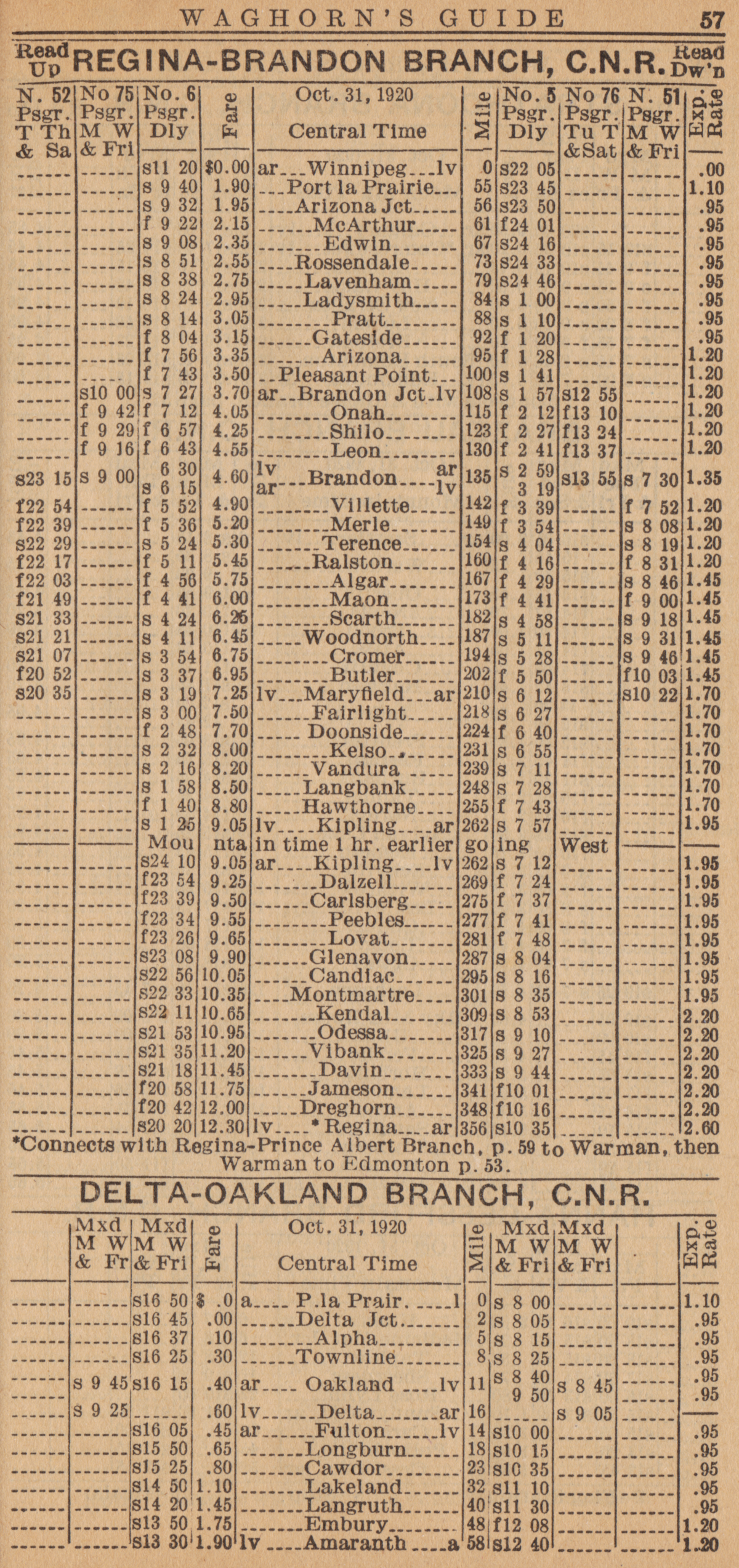Saved from the woodstove a century ago. This handy reference for business travellers in the west has details on post offices and postage, real estate, banks, politicians, lawyers and courts, and governments including local municipalities.
However, its largest section shows passenger train schedules west of Winnipeg. The map - inside the back cover - showing railways, etc, was extracted by a previous owner ... but I've got maps for you ...
The booklet is 3 1/2 by 6 inches and 160 pages long. In 2023 inflation-adjusted dollars, its $.20 selling price would be $3. Archive.org has one from the 1940s and a few from the 1950s - if you want to thumb through one for yourself.
Chronologically in history, this forms the next part of the my Portage Lines series. Through this effort I am trying to better understand the history of the railway lines through Portage la Prairie, Manitoba. Consequently, only those pages which show passenger trains through Portage are reproduced below. I don't think I have missed any of the railway subdivisions associated with Portage.
With James J Hill deceased, this is all that remains of his line north to Portage.
Boosters of Portage (see Part 7) described its northern terminal as the Portage Union Station (GTP + GN).
* * *
Next, comes the Canadian Pacific Railway.
Officers and agents are thoroughly listed.
* * *
Considering the first page of timetables, below ...
In the far right column, Exp. Rate is definitely an abbreviation for 'Express Rate' - but the term is not defined in the booklet.
Of course, these fares are not official - as a ticket agent would be quick to tell you.
And, given the great post-war demand for rail travel, the railways have had their wishes granted for fare increases 'by Government order' ... bottom of the page.
As the timetable suggests, this line is in the direction of Rapid City. It is north-west of Portage. Rapid City is almost due north of Brandon.
This map from 1916 is posted in two sizes.
The first is an overview.
The second makes it easier to see railway line details as the colours have faded.
 |
| from: Atlas of Canada; 1916; Minister of the Interior, Government of Canada. |
 |
| from: Atlas of Canada; 1916; Minister of the Interior, Government of Canada. |
* * *
Printed separate from its timetables, perhaps as a late-breaking detail, are the officers and agents of the new Canadian National Railways. Because the Canadian Northern Railway (based in Toronto) preceded the Grand Trunk Railway (based in Montreal) into government control, it seems logical that the new CNR's headquarters are occupying the already-established Canadian Northern office space in Toronto.
... No one is writing history articles yet ... using 'CNoR' to distinguish it from the CNR ... so the new CNR is just in the old CNR offices.
The new CNR President is an experienced Canadian Northern official whose autobiography contributed to earlier segments of this Portage Lines series.
Soon the government will be winding up the sad Grand Trunk Pacific-National Transcontinental/Grand Trunk saga and CNR headquarters will relocate to the Grand Trunk's building in Montreal.
... This GTR consolidation will result in future short blurbs on the history of the Canadian National Railways citing 1923 as the year in which this crown corporation was established. However, as you see in this 1920 woodstove-dodging booklet, the Canadian National Railways name was in the public space earlier than 1923.
As you probably know Canora (above) is a contraction of Canadian Northern Railway.
The Grand Trunk Pacific (a railway laying track where there were few pre-existing towns) had the practice of naming their new sidings and siding-side settlements in alphabetical order, east to west. This probably made early operations and clerical work easier ... and may have prevented the odd collision.
... One of my bosses was a New Yorker who married a fellow PhD student from Prince Albert. Driving over the Prairies with relatively little for him to anticipate except the next letter of the alphabet used to drive him nuts!
* * *
Finally, these historically interesting operations have no association with Portage la Prairie.














